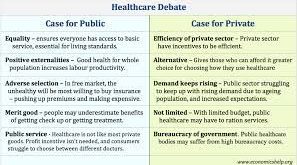Medical bankruptcy is a significant concern in many countries, especially in the United States, where healthcare costs can be exorbitant. Millions of individuals and families face financial distress due to unexpected medical expenses, leading to devastating consequences, including bankruptcy. Health insurance plays a crucial role in mitigating this risk by providing financial protection and access to necessary healthcare services. This article explores how health insurance can prevent medical bankruptcy and the importance of understanding coverage options.
 1. Understanding Medical Bankruptcy
1. Understanding Medical Bankruptcy
What Is Medical Bankruptcy?
Medical bankruptcy occurs when individuals or families find themselves unable to pay for medical expenses, leading to overwhelming debt and financial insolvency. This situation can arise from high costs associated with surgeries, hospital stays, chronic illness management, or emergency care.
Statistics and Impact
- Prevalence: Studies have shown that medical expenses contribute to a significant percentage of bankruptcies in the U.S. A report by the American Journal of Public Health estimated that nearly 66.5% of bankruptcies were linked to medical issues.
- Consequences: The ramifications of medical bankruptcy extend beyond financial distress; they can impact mental health, credit scores, and future access to essential services.
2. The Financial Protection Offered by Health Insurance
Cost Sharing Mechanisms
- Premiums, Deductibles, and Copayments: Health insurance plans typically involve premiums, deductibles, and copayments. While these costs can add up, they are generally much lower than the potential out-of-pocket expenses for uninsured individuals facing major medical events.
- Out-of-Pocket Maximums: Most health insurance plans have an out-of-pocket maximum, which limits the total amount you would pay for covered services in a year. Once this limit is reached, the insurance covers 100% of additional costs, providing crucial financial protection.
Access to Preventive Care
- Preventive Services: Health insurance often covers preventive services at no cost, including vaccinations, screenings, and annual check-ups. By promoting early detection and treatment, these services can help prevent more severe health issues that could lead to costly medical interventions.
3. Reducing the Risk of Catastrophic Expenses
Emergency Coverage
- Emergency Services: Health insurance typically covers emergency medical services, which can be a significant source of financial strain. Having coverage ensures that individuals can seek immediate care without the fear of incurring insurmountable debt.
- Specialist and Hospital Care: Access to specialists and hospital care through insurance can lead to timely interventions, preventing complications that could result in higher costs and longer recovery times.
Chronic Condition Management
- Ongoing Care: For individuals with chronic health conditions, regular medical care is essential. Health insurance facilitates access to necessary treatments and medications, helping to manage these conditions effectively and avoid acute medical crises that could lead to bankruptcy.
4. The Importance of Choosing the Right Plan
Evaluating Coverage Options
- Comprehensive Benefits: When selecting a health insurance plan, it is essential to evaluate the coverage options, including hospitalizations, outpatient care, and prescription medications. Comprehensive coverage can significantly reduce the risk of unexpected medical expenses.
- Network of Providers: Understanding the network of providers associated with your plan is critical. In-network providers typically offer services at reduced rates, helping to keep costs manageable.
Understanding Policy Terms
- Know Your Rights and Responsibilities: Familiarizing yourself with the terms of your health insurance policy, including coverage limits, exclusions, and the claims process, can help you navigate the system effectively and avoid financial pitfalls.
5. Advocating for Health Care Reform
Policy Changes
- Supportive Legislation: Advocating for health care reforms that expand access to affordable health insurance can help reduce the incidence of medical bankruptcy. Policies that promote transparency, price regulation, and coverage for pre-existing conditions are vital.
- Community Resources: Engaging with community organizations that provide resources and support for navigating health insurance options can empower individuals to make informed decisions.
 Conclusion
Conclusion
Health insurance serves as a critical safeguard against the risk of medical bankruptcy, providing financial protection and access to necessary healthcare services. By understanding the importance of health insurance, evaluating coverage options, and advocating for systemic reforms, individuals can better protect themselves and their families from the financial burdens associated with medical care. As healthcare costs continue to rise, ensuring access to affordable health insurance remains essential for fostering financial stability and promoting overall well-being.


